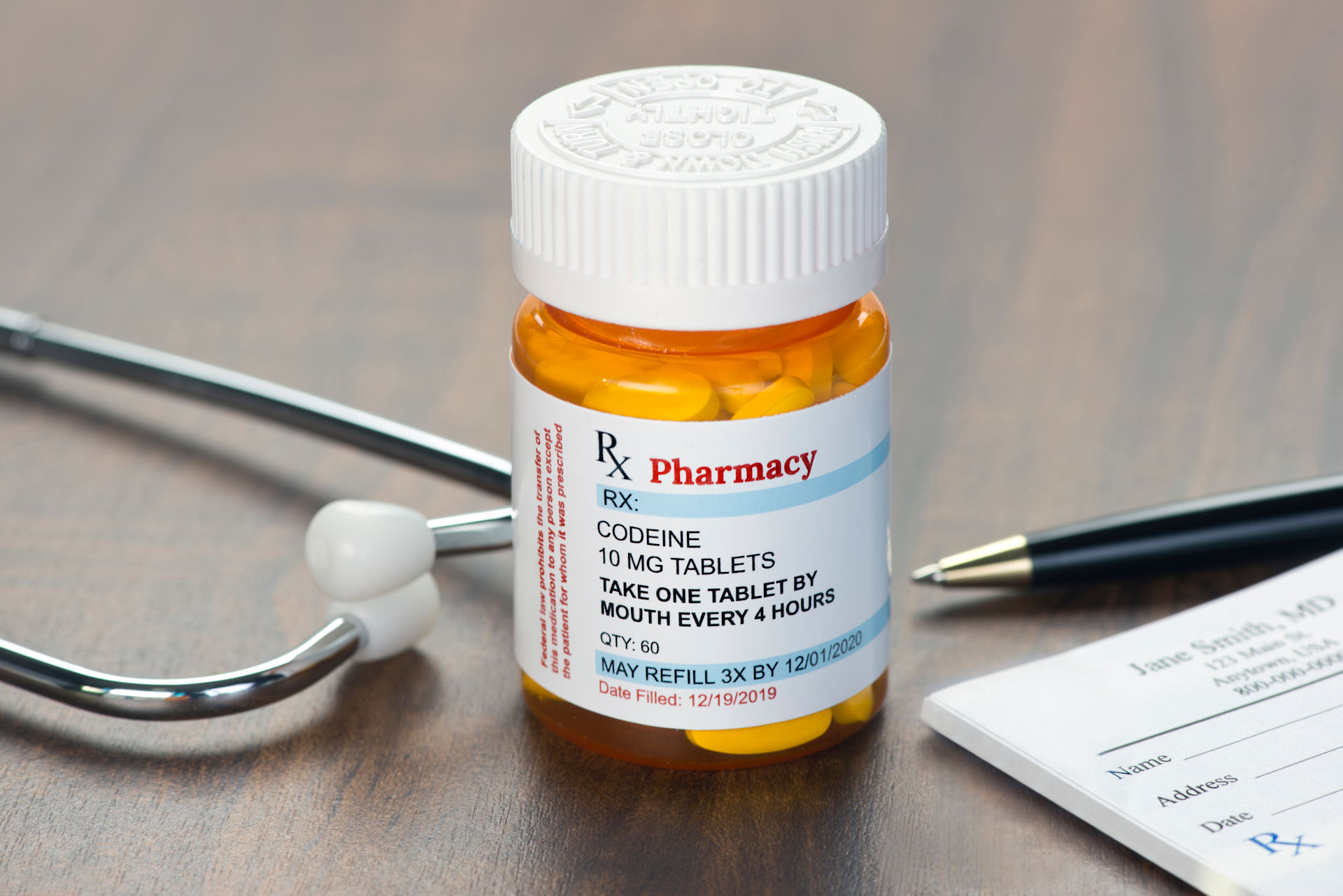The Centers for Disease Control and Prevention (CDC) released data in late 2022 showing that life expectancy in the US has gone down to its lowest point in at least two decades, due in part to the proliferation of drugs. One of the most striking details included in the data indicates that in a 12-month period from 2021, there were at least 110,236 Americans who died from opioid-related causes. This is an all-time record high for deaths attributed to this particular substance, which includes medications such as codeine, a popular compound derived from morphine. Much like every other form of opioid and opiate addiction, codeine addiction is also a grave threat to everyone. This is why Westwind Recovery® offers a sober living program in Los Angeles to help you fight this addiction.
What Is Codeine?
Codeine is an opiate derived from morphine and is mainly used to treat pain, coughing, and diarrhea. It is found naturally in the sap of the Papaver somniferum plant, more commonly known as opium poppy or breadseed poppy, which is typically used to treat mild to moderate degrees of pain. When used, this compound typically starts working after half an hour of being taken, with its effects lasting a maximum of at least two hours, although some admit to feeling its effects for up to four to six hours.
What Are the Medical Uses of Codeine?
This substance can be used to treat pain that ranges from mild to moderate in severity. As such, it is mainly used to treat post-surgical dental pain, and to some extent, even used in treating episodes of pain attributed to cancer pain, or when a tumor is compressed or infiltrates nearby organs or parts of the body. To a lesser extent, it could also be used to treat diarrhea and irritable bowel syndrome, which also mimics the discomfort and symptoms of diarrhea.
What Are the Signs and Symptoms of Codeine Addiction?
The symptoms manifested by people who abuse codeine are similar to most other symptoms suffered by those who abuse opioids, although the severity and frequency would largely depend on the length of time that the person had been using codeine. Some of the symptoms include:
- Depression
- Anxiety
- Emotional numbing
- Mood swings
- Social isolation
- Drowsiness
- Discoloration of lips and fingernail beds (blue tinges)
- Dizziness
- Fainting
- Dry mouth
- Constipation
- Itching
- Rashes
- Urinary retention
- Hypotension (low blood pressure)
- Decreased libido
- Respiratory depression
- Seizures
- Psychosis
- Hallucinations
- Delusions
- Impaired memory
- Tremors
- Vertigo
- Stomach pains
- Loss of appetite
- Progressive weight loss
- Constricted (small) pupils
- Irregular heart rate
What Are the Effects of Codeine Addiction?
The effects of codeine use, much like the effects of any kind of abused opioid or opiates, tend to result in multiple organ damage. If left untreated, the severity of the organ damage could lead to organ failure and death. The effects of codeine addiction are:
- Acute pancreatitis
- Liver damage
- Kidney damage
- Increased sensitivity to pain
- Major depression
- Muscle twitches
- Cramps
- Uncontrollable spasms
- Muscle pain
- Respiratory depression
- Cold and clammy skin
- Impaired memory
- Lack of muscle tone
- Intestinal obstruction or ruptures
- Severe drowsiness
- Loss of appetite
- Significantly slowed breathing
- Loss of consciousness
- Hallucination
- Impaired vision
- Difficulties in cognitive function
- Vertigo
- Coma
- Seizures
- Death
Why Is Codeine So Addictive?

Like most other opiates, Codeine is a substance derived from opium, typically used in the treatment of pain. The truth about codeine is that it is actually a short-acting painkiller with effects that only last a few hours compared to other similar substances. Despite this, however, codeine is one of the most used and abused opiates in the world. Comparative studies have established that it also produces the same euphoric effect as most other opiates, providing a deep sense of calm and euphoria. This property of codeine produces euphoria while only lasting for a few hours is being seen as the reason why people take so much of it.
With an effect that is far shorter than the effect of others opiates or opioids, people are bound to take far more quantities of codeine just to feel the effects longer. To make matters worse, this substance is also seen as a “gateway drug”, which means it also has the tendency to make people want to try other substances. These people could become interested in other drugs that could produce the same effects for a far longer duration.
There have also been numerous cases where someone with a codeine addiction developed a co-occurring disorder. These disorders were initially seen as side effects of chronic codeine use, although many have persisted well beyond the medical detox and rehab period in a dual diagnosis treatment center in Los Angeles. Mental health experts suspect that these co-occurring mental health issues could have been an undiagnosed condition the codeine user might have had for some time which was then brought out by the illicit codeine use.
What Are the Withdrawal Symptoms of Codeine?
People who indulge in opiates and opioids tend to suffer the most by way of withdrawal symptoms during medical detox and opiate addiction rehab, mainly due to the nature of codeine. Opioids and opiates work to nullify the sensation of pain while giving the user a great sense of peace and pleasure. A person going through substance abuse treatment programs will not only lose the ability to enjoy these sensations but are also reintroduced to the world of pain as they begin to regain the normal ability to feel various forms of stimuli.
The severity and duration of the withdrawal symptoms typically vary depending on a number of factors, including:
- Age
- How long codeine has been used
- Quantity or dosage used
- The physical condition of the user
- Existing conditions while using codeine
The withdrawal symptoms of codeine addiction include:
- Chronic headaches
- Insomnia
- Muscle aches
- Fever
- Chills
- Inability to focus or think
- Lethargy
- Nausea
- Vomiting
- Profuse sweating
- Stomach cramps
- Diarrhea
- Dehydration
- Depression
- Runny nose
- Teary eyes
- Irritability
- Hypertension
- Dilated pupils
- Loss of appetite
- Hypersensitivity
While these symptoms are nowhere near life-threatening, there is always the potential of developing serious complications. These include diarrhea and dehydration, which, if not treated in time, could cause the body to shut down and eventually lead to death.
Severe mental conditions are also a possibility for people who undergo withdrawal from opiates and opioids. This is because of the fact that these substances directly affect the central nervous system, particularly the brain. It is not uncommon for people who are undergoing medical detox and intensive outpatient program to suffer from either depression or severe anxiety, or both. This is why certain patients are being closely monitored for possible suicide tendencies. Certain emotions felt during medical detox and rehab such as feelings of guilt, shame, and worthlessness also contribute to a person’s suicidal ideation.
What Is the Codeine Withdrawal Timeline?

Different people could experience different durations and symptom severity during medical detox, although there is a generally accepted timeline for codeine withdrawal.
The first four days of medical detox tend to manifest the worst of the withdrawal symptoms. During these days, patients could experience varying degrees of muscle pain, disruption of sleeping patterns, headaches, nausea, vomiting, diarrhea, and profuse sweating. Dehydration is a great risk during these first four days, which is why the patient is typically kept under strict medical observation.
The worst symptoms usually tend to start subsiding on the fifth day, although the patient could experience significant weakness, exhaustion, or persistent feelings of fatigue from the loss of body fluids due to profuse sweating, vomiting, and diarrhea. This is why rehydration is a big part of the care given to medical detox patients during this phase.
This phase is typically when the patient experiences depression and sudden mood swings, although patients also tend to begin to start feeling much better as the worst symptoms have stopped by this time.
What Are the Signs of a Codeine Overdose?
People have a great tendency to overdose on opiates and opioids due to the ability of the human body to develop a tolerance for substances that are chronically taken. Codeine is particularly worrisome because the risk of overdose is quite high as people tend to take a higher dosage of codeine compared to other opiates or opioids because it is short-acting.
It is important to note that one or more of these signs could be indicative of a codeine overdose:
- Bluish-purple lips and fingernails
- Persistent or significant muscle weakness
- Cold, clammy skin
- Shortness of breath
- Shallow breathing
- Weak pulse
- Drastically slow heartbeat
- Hypotension (low blood pressure)
- Coma
- Pinpoint pupils
- Inability to stay conscious
- Extreme drowsiness
- Severe itchiness
- Slurred speech
There is Hope for Lasting Sobriety from Opiate and Opioid Addiction at Westwind Recovery®

Overdose and death are very real consequences of a substance abuse disorder, which is why people should be more aware and conscious of the possible consequences of illicit drug use. There are many overdose-related deaths that are actually preventable if only the user had gotten help in time. This is why we don’t waste any time at all here at Westwind Recovery® when it comes to helping people with substance abuse issues. We attend to anyone who needs our help immediately and assesses what is needed to deal with their condition, as this might be the only chance they have for recovery. Let us help you now.

Dr. Deena is the Chief Clinical Officer of Westwind Recovery®, an award-winning outpatient treatment center in Los Angeles where she oversees the clinical and administrative program and treatment methods. Dr. Deena is a doctor of psychology and licensed clinical social worker since 1993. LCSW #20628. Originally from the East Coast, Dr. Deena has worked running treatment centers, worked as a therapist in psychiatric hospitals as well as school settings and currently has a thriving private practice in the LA area. Dr. Deena has appeared regularly on the Dr. Phil Show as an expert since 2003. She has also been featured on many other TV shows, podcasts and has contributed to written publications as well as podcasts.




